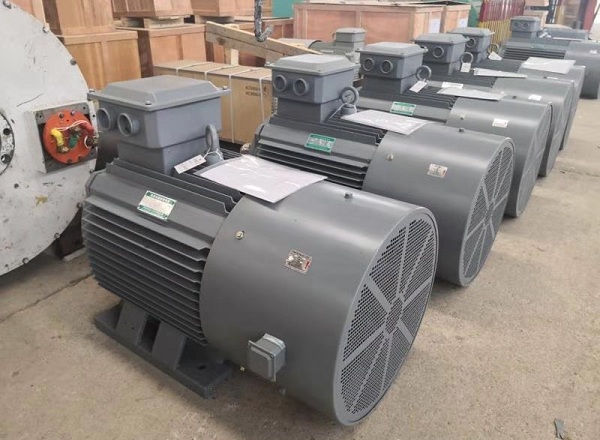Permanent magnet motors generate torque through the interaction of stator current with permanent magnets on or in the rotor. Small, low-power motors are used in IT equipment, commercial machines, and automotive auxiliary equipment where surface rotor magnets are common. Internal magnets (IPM) are common in larger machines such as electric vehicles and industrial motors.
In PM motors, centralized (short-pitch) windings may be used for the stator if torque pulsations are not considered, but distributed windings are common in larger PM motors. The Inverter Is Critical For Controlling The Winding Current since PM motors do not have a mechanical commutator. PM motors do not require current to support their magnetic field, unlike other brushless motors. As a result, PM motors can provide the most torque and may be the best choice if they are small or lightweight. The lack of magnetizing current also means higher efficiency at the “sweet spot” load – where the motor performs best.
In addition, while permanent magnets offer performance benefits at low speeds, they are also the technology’s “Achilles heel”. For example, as the speed of a PM motor increases, the reverse electromotive force approaches the inverter supply voltage, making it impossible to control the winding current. This defines the base speed of a general-purpose PM motor and usually represents the maximum possible speed for a given supply voltage in a surface magnet design.

At speeds greater than the fundamental speed, IPMs use active magnetic field weakening, in which stator currents are manipulated to depress magnetic flux intentionally. The range of speeds that can be reliably implemented is limited to about 4:1. As before, this limit can be achieved by reducing the number of windings turns and accepting greater cost and power losses in the inverter.
The need for magnetic field weakening is speed dependent and has associated losses regardless of torque. This can reduce efficiency at high speeds, especially at light loads.
PM motor’s disadvantages include that it is difficult to manage under fault conditions due to its inherent reverse electromotive force. Even if the inverter is disconnected, as long as the motor is rotating, current will continue to flow through winding faults, resulting in cogging torque and overheating, which can be dangerous. For example, the weakening of the magnetic field at high speeds due to inverter shutdown can lead to uncontrolled power generation, and the DC bus voltage of the inverter can rise to dangerous levels. Operating temperature is another important limitation except for those permanent magnet motors equipped with samarium cobalt magnets. And high motor currents due to inverter failure can lead to demagnetization. The holding force of the mechanical magnets limits the maximum speed. If a permanent magnet motor is damaged, repairing it usually requires returning it to the factory because safely extracting and handling the rotor is difficult. Finally, recycling at end-of-life is problematic, although the current high value of rare earth materials may make this more economically viable.
Despite these drawbacks, permanent magnet motors remain unrivaled in terms of low speed and efficiency, and they are useful in situations where size and weight are critical.

With the advantages of high efficiency, good energy saving, small size, light weight and high reliability, permanent magnet motors have been widely used in various industries.
The high efficiency and energy-saving characteristics of permanent magnet motors enable them to meet the needs of industries with high energy efficiency requirements. Whether for CNC machine tools, plastics machines or compressors, PM motors significantly reduce energy consumption in industrial production. In addition, PM motors play an important role in industrial automation and are widely used in robots, CNC tooling machines, packaging equipment and conveyor systems, where their high efficiency, responsiveness and precise control characteristics make them ideal for high-precision machining and production.
Permanent magnet synchronous motors are widely used in electric and hybrid vehicles. High power density and high efficiency enable electric vehicles to have better range and energy efficiency. PM motors can not only improve the driving efficiency of the car, but also realize energy recovery to further improve the range of the car.
Permanent magnet motors (PMGs) also play an irreplaceable role. Permanent magnet generators (PMGs) are widely used in wind power and hydroelectric power generation, etc., utilizing wind or water energy to be converted into electricity. At the same time, permanent magnet motors are also used in solar photovoltaic tracking systems, ocean energy generation and other new energy devices to promote the development of renewable energy.
Enneng is a high-tech enterprise intergrating R&D and manufacturing of permanent magnet motors. With more than dozens of patents, Enneng has ranked as “100 Innovative Enterprises” in Qingdao and have been selected as a member of the Qingdao Motor Association. Whatever you need, our experienced engineers shall provide the effective solution as you required. Your demand is always what we pursue!